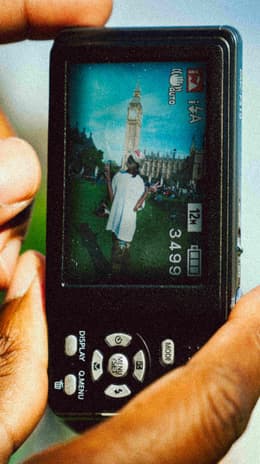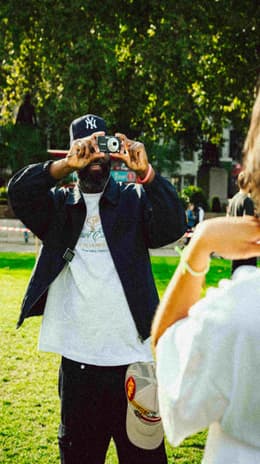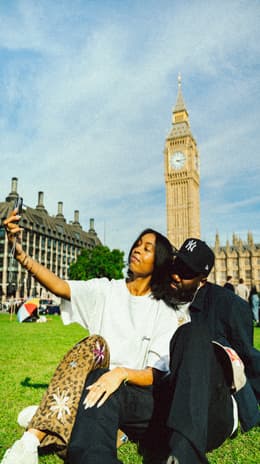
By selecting “Accept all” you allow Back Market and our partners to use cookies and to share your data for all these purposes. We and our partners use cookies and similar tools to measure our site's audience, evaluate the performance of our ads, and show you personalized content and ads.
Except for cookies that are essential for navigating our site, we use these cookies and share your data only with your consent. Learn more about cookies. You can change your mind and modify your choices at any time by going to the "Cookies and privacy settings" section at the bottom of any page. Read our Cookie policy and Data Protection Policy for more info.

Why throwback digicams are taking over your feed
Updated on 18 December 2024
18 December 2024
4 mins read
Natty Kasambala
Writer and Editor
The presence of digicam photo dumps is now inescapable, especially when it comes to its Gen Z and millennial users. See how this nostalgic trend is impacting the masses on social media.
If you’re in your 30s or 40s, it might feel like you’re reliving history. Well, at least if you’re active on social media.
No, you don’t need to adjust your device, social feeds have shifted aesthetically in the last few years. Instead of a standard balance of high-definition iPhone and sharp DSLR photography, there’s now a not-so-secret, third thing happening, the digicam.
The resurgence that began in the far-flung alternative corners of the internet has gained huge momentum this year and hit the mainstream with full force as younger generations have taken to sourcing and repurposing the digital cameras of yesteryear to snap their lives in glorious 20 Megapixels.
Initially sprouting on TikTok before migrating over to Instagram and beyond, the presence of digicam photo dumps is now inescapable, especially when it comes to its Gen Z and millennial users. Everyone from Bella Hadid to Dua Lipa is enlisting the help of these devices to bring an effortless It Girl charm to their profiles; leaning into the low-res, flash-heavy aesthetic of the vintage cameras.
These are the generations that have grown up with smartphones as an extension of their consciousness and with every app and function just a swipe away since the invention of the iPhone back in 2007, it’s no surprise that convenience feels like a given in today’s climate. Instead, many have found themselves veering away from the mentality that one device can rule them all, in favoUr of more niche and specific modes of creative self-expression.
Drawn to the novelty of gadgets and gizmos, what better accessory could there be for a night out with your friends than a compact Sony Cyber-shot slipped into the back pocket of your low-rise bell-bottom jeans? Even better if you can customiSe it with stickers and ribbons for peak kitsch and post the tutorial on TikTok.
Why digital cameras are making a comeback
What is it about the aesthetic that’s so enticing?
At a time when our phone cameras detail every pore in 4K, there’s definitely something to be said for the flattering wash of subtle over-exposure that might leave a little more to the imagination. On a timeline where everything can feel glossy and pristine, the digicam comes with a natural patina that makes even the most basic of shots feel romantic and lived in.
In fact, it feels almost inevitable that an audience raised on platforms like Instagram and VSCO – which were popularised precisely because of their capabilities to mimic the filters of these devices – would eventually make their way right back to the original source. Even the painstaking act of harvesting your pictures from the device to post in-feed feels like the days when everyone uploaded an entire Facebook album dedicated to a singular house party, your friends eagerly awaiting each drop in an effort to relive the night.
But the nostalgia for vintage aesthetics has been a topic of conversation for years now. From Y2K fashion to the resurgence of vinyl, polaroids and most recently the comeback of the flip phone. So you might ask why digital cameras have become so popular now when film cameras already produce the desired effect.
Well with digital cameras, replicating that virtual nostalgia has never been more accessible. These cameras are far less technical than an analog setup and far more affordable and sleek than your average DSLR. Mainly automated and without ever-rising processing costs, you don’t have to study up on apertures, shutter speeds, or ISOs. You also won’t have to raid your savings for a roll of Kodak Gold film or be restricted to 36 exposures when trying to nail the perfect selfie. So for young users with limited resources and digitally native skill sets, they’re an incredible way to guarantee a fuss-free film-like finish on a budget.
Generations of the Canon Powershot and Nikon Coolpix have become fan favourites for straightforward point-and-shoot purposes. And though you can keep it simple, many of the early digital cameras even come with fun modes and features to experiment with such as fish eye, infrared, impressive optical zooms, and hefty flash for that high fashion nod. All of this and giving these old digital cameras a second lease of life is also pretty great for the environment.
So what next, are there any relics left to be revived? Well now that our images are ageing backwards, it’s only a matter of time before video follows. Of course, VHS and film footage shot on cameras like Super 8’s has remained a popular stylistic choice for filmmakers and artists to visually indicate years gone by or a dreamlike effect. But digital camcorders are no doubt next up on the shopping list for those wanting to create similarly nostalgic reels, TikToks or even longer-form content. So it won’t be long before we have answers to the question, ‘What would old-school home movies look like if they were shot in 2025?’

Written by Natty Kasambala, Writer and Editor
Formerly at Dazed, Columbia Records, Sony Music, and gal-dem. Now full-time freelance and always interested in work that sits at the intersection of music, film, art, literature and design.


